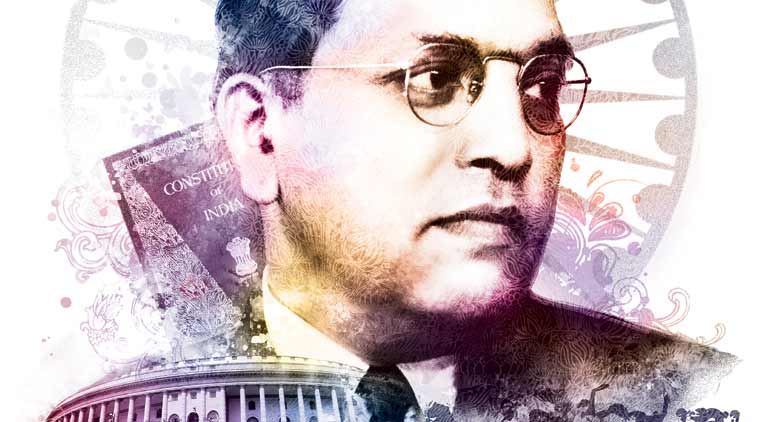
16 January in Dalit History – Dr. Ambedkar: I am not asking for any special favour
16 January 1930: Periyar returned from Malaya to Tamil Nadu.
16 January 1931: Dr. Ambedkar commented on the Report of subcommittee no VII (defense) at the round table conference in London.
Dr. Ambedkar vehemently fought for the rights of inclusion of all sections, including the depressed classed (presently called Dalits) for recruitment in Indian Army and hence sought a substantiative amendment to clause (2) of paragraph 4 of the report. “No doubt”, he said, “I move the amendment primarily with a view to protecting the specific rights of the depressed classes, but in doing so I am not asking the Committee to confer any favour, I am asking the Committee to see us realize in practice the principle recognized in the Government of India Act, that no subject of His Majesty shall be debarred from entering any Public Service by reason of his caste, creed or colour. In doing so, therefore, I do not think I am asking for any special favour”.
For details do visit
http://www.ambedkar.org/ambcd/15B.%20Dr.%20Ambedkar%20at%20the%20Round%20Table%20Conferences.htm#a2
16 January 1946: Riots between touchable and untouchables erupted (Hindu – Mahar riots).
Dr. Ambedkar believed that a candidate to be elected on the reserved seat should be elected only on the votes of untouchables (separate electorates). However, as a consequence of Poona Pact (signed in 1932), the Congress party would field a candidate from any other untouchable against Dr. Ambedkar and they would have no problems with his candidature even if he was illiterate or an absolute non-entity. They would ask all (touchable) to give votes to their untouchable candidate. This was Kautilya – style strategy only to defeat Dr Ambedkar! It was because of this that the deadly riots of Hindu vs Mahar erupted on 16 January 1946 in Nagpur against the Poona Pact.
The Dalit movement in Nagpur came to be known as the Mahar movement. Chambhars (leather workers) and Mangs (rope makers, also called Matangs) took part only as individuals. E.g. A gentleman named Behade was on the executive committee of the Scheduled Caste Federation. Ramratan Janorkar of Bhangi (sweeper) community dedicated his life to the Ambedkar movement and also became a Buddhist and later on Mayor of the Nagpur Municipal Corporation.
There was a huge poster pasted at Timki in Nagpur, proclaiming, “Maharonke Khun ki holi khelenge!” (We will play Holi with the blood of Mahars!). Due to the sentiment asserting “Congress rule is ours rule”, and with newspapers systematically spread the emotional propaganda that Dr. Ambedkar’s party (Scheduled Caste Federation) opposed Independence of India, the Hindus decided to teach a lesson to the Mahars. People of Wearer, Farmer and Writer castes from Hindu communities stopped Mahar youths and beat them up when they could be caught alone. But no attacker had the courage to attack a group openly.
During this time, Nagpur city was buzzing with movements. Not a single day went by without meetings, rallies and gatherings. Because Hindus dominated the police and other departments, whenever there arose the slightest sign of a riot, Mahar youth were put under house arrest. The battle drums of the agitation against the Pune Pact (which was signed in 1932) sponsored by the Federation was kept loud and alive. The thunder of “Long Live Ambedkar! Bhim Raj in a short while!” from hundreds of agitators taken in police van along Jail Road could be heard from afar. The disciples of Dr. Ambedkar had created a tremendous self-confidence in the Dalit community. For the matter, other communities also were awed by the Dalits.
Some unions under Congress declared workers strike. They used to send forth goons for battle, catching workers by ones and twos and beating them up. But the Ambedkarites decided to resist. The men went to work in groups of 20-25. The women determined to go to work in an organized manner. Every Mahar woman took with her a packet of chilli powder, a potent weapon of stinging red fire, tied up in the end of her sari.
During the riots, defence squads were formed from neighbourhood to neighbourhood. Training classes began in stick fighting (Lathi – Kathi) and use of cudgels. Girls also were taught. Trainers, gangsters, bandits, teachers, youths – all became one. The resolve to give a response to the atrocities grew firm. Some youths patrolled during the night.
There were many martyrs from the untouchable community during the riots and Heroes like Ghanashyawm Wrestler had emerged.




+ There are no comments
Add yours